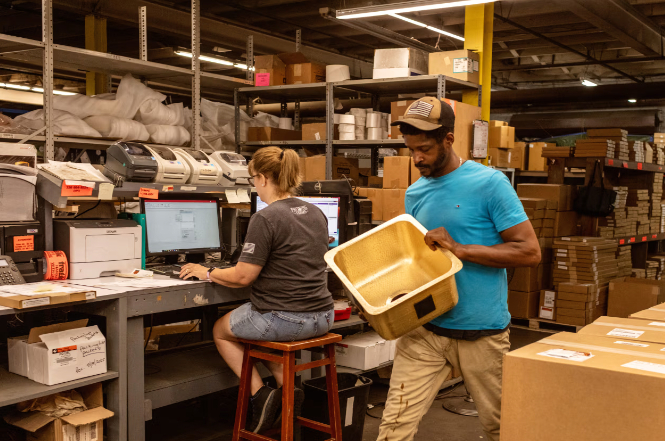
Since the Trump administration's tariff policy was implemented six months ago, American businesses have been mired in a pricing dilemma. A family-owned business in North Carolina admitted, "Everyone is agonizing over what to do." The ripple effects of tariffs have spread like dominoes, with soaring costs, weakening demand, and market uncertainty posing an unprecedented dilemma for companies' pricing strategies. Raising prices could mean losing customers, while remaining unchanged threatens profits. Behind this pricing dilemma lies a difficult trade-off between survival and growth.
Tariffs directly drive up import costs, forcing companies to choose between raising prices and maintaining market share. Adidas, for example, is expected to see $200 million in additional costs in the second half of the year due to tariffs, forcing it to raise prices. However, its CEO worries that inflation and suppressed demand could lead to declining sales. Similar dilemmas plague small and medium-sized businesses: A North Carolina manufacturer has been forced to reduce production due to soaring component costs caused by tariffs. Carter's, a children's clothing brand, has admitted that if the cost increases become permanent, it will be forced to recover costs or even exit low-margin businesses.
Changes in the consumer market are exacerbating pricing challenges. The luxury goods industry once relied on price increases to maintain profits, but by 2024, 50 million consumers will have left globally, with young people and occasional buyers turning to more rational consumption due to "price fatigue." UBS data shows that excessive price increases have exhausted their potential, while brands like Hermès that have "restrained price increases" have outperformed, highlighting increased consumer sensitivity. When cost pressures coexist with sluggish consumption, companies' pricing is like walking on the edge of a cliff; a single misstep could lead to a plunge.
Faced with these challenges, companies are exploring various strategies to overcome these challenges, but with varying successes and risks. Some companies, such as gear transmission companies, have opted to pass on costs directly by raising prices, such as by offsetting tariffs. However, this move could weaken competitiveness, especially amidst sluggish consumption. Another approach is to internalize costs by reducing staff or streamlining product lines, but long-term profit compression could strain capital chains.
To circumvent tariffs, companies are accelerating supply chain adjustments. For example, electronics companies have relocated component production to Vietnam, reducing US export tariffs by 15%, while furniture companies have reduced tariffs from 25% to 6% through modular design. However, restructuring supply chains requires significant investment, making it difficult for small and medium-sized enterprises to afford it, and it also presents operational risks in new regions. Companies are also diversifying their export markets, exploring emerging markets such as Latin America and the Middle East to mitigate risk. They are also adopting flexible contracts, such as tiered pricing and tariff-addition clauses, to share risk with customers. However, cultivating new markets takes time and may present new cultural and regulatory challenges.
Companies are also actively exploring trade agreements such as the RCEP and the USMCA, seeking tariff exemptions. Over 500 items subject to US tariffs on China are eligible for exclusion, but the application process is complex and requires professional support. Digital compliance systems have become a key tool for companies to navigate policy changes.
The dilemma faced by family businesses in North Carolina reflects the common challenges faced by all businesses in the face of trade disruptions. Pricing is not just a numbers game; it's a strategic game. Only by striking a balance between flexible response and long-term restructuring can companies navigate the tariff fog and transform uncertainty into an opportunity to reshape their competitiveness.

The U.S. third-quarter GDP growth rate, strikingly highlighted at 4.3%, not only surpassed market expectations but also earned the label of "the fastest in two years."
The U.S. third-quarter GDP growth rate, strikingly highligh…
Recently, US personnel intercepted a "Century" super oil ta…
According to Xinhua News Agency, the subtle changes in the …
The rapid development of artificial intelligence has brough…
In December 2025, Taiwan's political scene was shaken by a …
When Apple appears for the Nth time on the list of penaltie…